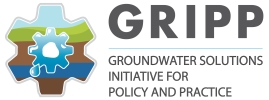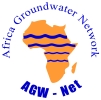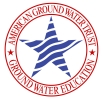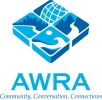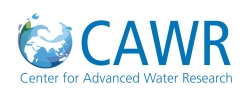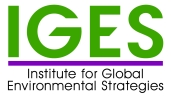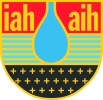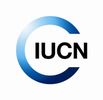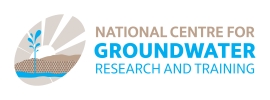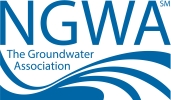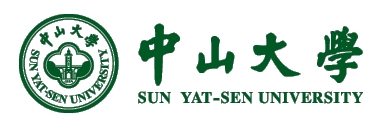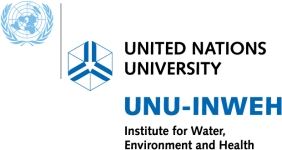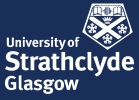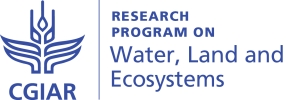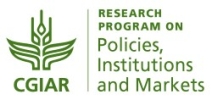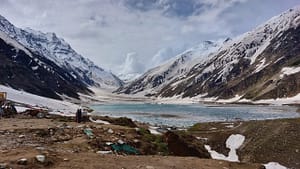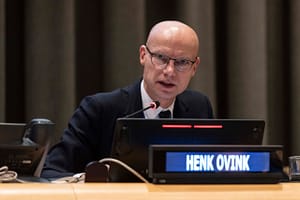Groundwater Solutions Initiative for Policy and Practice (GRIPP) – Special session at World Water Week 2018
The need to ensure water security and resilience for vulnerable communities (United Nations Sustainable Development Goal – SDG 6) – what Amina Mohammed (Deputy Secretary-General of the United Nations) described as a “docking station” for achieving all of the SDGs – as well as the widespread recognition that we are not on track to do so, has pushed nature-based infrastructure to the forefront of the conversation at World Water Week (WWW) 2018 in Stockholm, Sweden.
However, the “green” infrastructure we need is not only that which is visible above ground, but also what lies beneath our feet. That was the focus of the special session on Groundwater-based natural infrastructure (GBNI) solutions: The missing link to resilience? co-convened by International Water Management Institute (IWMI), Daugherty Water for Food Institute, (DWFI), International Groundwater Resources Assessment Centre (IGRAC), Institute for Global Environmental Strategies (IGES), and Center for Advanced Water Research (CAWR) at World Water Week. GBNI solutions enhance natural processes linked to the subsurface, such as water infiltration, purification, storage and environmental flows, through human intervention, to enhance ecosystem functioning, water and food security, resilience and human development.
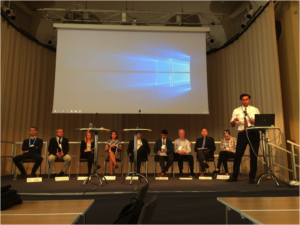
The panel of presenters, moderated by Alvar Closas (IWMI). From left: Arnaud Sterckx (IGRAC), Catalin Stefan (CAWR), Jenny Grönwall (SIWI), Marlies Batterink (Aqua for All), Paul Pavelic (IWMI), Binaya Shivakoti (IGES), Andrew Ross (ANU), Nicholas Brozović (DWFI) and Karen Villholth (IWMI) (photo credit: Samurdhi Ranasinghe).
The solutions span from simple rainfall and runoff harvesting and managed aquifer recharge (MAR) schemes implemented at decentralized and distributed level in the landscape and by local communities to enhance water availability during dry periods to advanced in-situ bioremediation of groundwater contamination and strategic underground reserves from desalinated water. Another approach, using treated press water from sugar beet production, injected in coastal aquifers to suppress saltwater intrusion and provide dry season water for high-tech greenhouse horticulture production, is worth mentioning. The collaborative session, bringing in many GRIPP partners and collaborators, showcased some of the practical solutions and multiple benefits arising from the use of groundwater and aquifers as natural infrastructure, which can provide sustainable, decentralized and cost-effective solutions while diversifying water sources to increase community resilience. The session highlighted concrete cases from Australia, Ethiopia, India, Japan and the USA, as well as an open-access modeling tool (presented by Catalin Stefan, CAWR) and a global data portal on MAR (presented by Arnaud Sterckx, IGRAC) to facilitate access to information on good practices and adoption of these solutions. The cases presented took us to the following areas:
- Adelaide, Australia, where stormwater during the wet winter season is retained in attractive urban wetlands, injected and stored in brackish aquifers to be abstracted and used during the summer for urban green spaces and peri-urban agriculture (presented by Andrew Ross, Australian National University [ANU] and the International Association of Hydrogeologists Commission on Managed Aquifer Recharge [IAH-MAR]).
- Ethiopia, where the initiative Green Roads for Water aims at harnessing water runoff from paved roads to recharge aquifers and enhance roadside agriculture (presented by Marlies Batterink, Aqua for All).
- India, where an innovative “Underground Taming of Floods for Irrigation” (UTFI) project in the Gangetic Plains has demonstrated the feasibility of collecting monsoon rains to recharge local aquifers while decreasing the risk of floods. The potential for UTFI solutions at the global scale could span 40% of total cropped area (presented by Paul Pavelic, IWMI).
- Japan, where an innovative payments for ecosystem services scheme in the municipality of Kumamoto that seeks increased groundwater availability through payment from water utilities and water-intensive industries to farmers for expanded rice growing has generated doubled recharge flows between 2004 and 2018 (presented by Binaya Raj Shivakoti, Institute for Global Environmental Strategies [IGES]).
- Nebraska, USA, where the rehabilitation of irrigation canals and appropriate management of excess flows in rivers and canals have had positive impacts on groundwater recharge rates and natural or constructed wetlands (presented by Nicholas Brozović, DWFI).
The cases constitute a selection from a broader collection of about 20 GBNI solutions and tools collated by GRIPP and partners, which are accessible here. The portfolio of options available, and even individual solutions, provide multiple benefits that may be shaped and managed depending on the objectives and the natural subsurface systems and their interaction with surface water and interrelated ecosystems. A guide to support the identification of various solutions is provided here.
However, like with any infrastructure-based solution, proper management, regulation and rules are critical to ensuring that the intended outcomes are achieved and adverse consequences are minimized. A not-so-successful case study of groundwater recharge schemes in textile-producing areas in India, using poorly treated effluent from factories through infiltration ponds, was highlighted to emphasize risks and pitfalls and the need for informed and managed approaches (presented by Jenny Grönwall, Stockholm International Water Institute [SIWI]).
While it is becoming clear that the international water and development community must consider nature as an active component of sustainable water management solutions, there is still a long way to go, given that nature-based solutions constitute just 1% of infrastructural investments. The GRIPP partnership, which brings together expertise across more than 30 collaborating partners and information on best practices, is a strong compass for navigating this emerging field.
To stay up to date with the latest on GBNI, sign up for GRIPP’s newsletter here.

Karen Villholth (IWMI) introducing the special session on groundwater-based natural infrastructure (photo credit: Samurdhi Ranasinghe).

The session was attended by more than 50 participants (photo credit: Samurdhi Ranasinghe).






